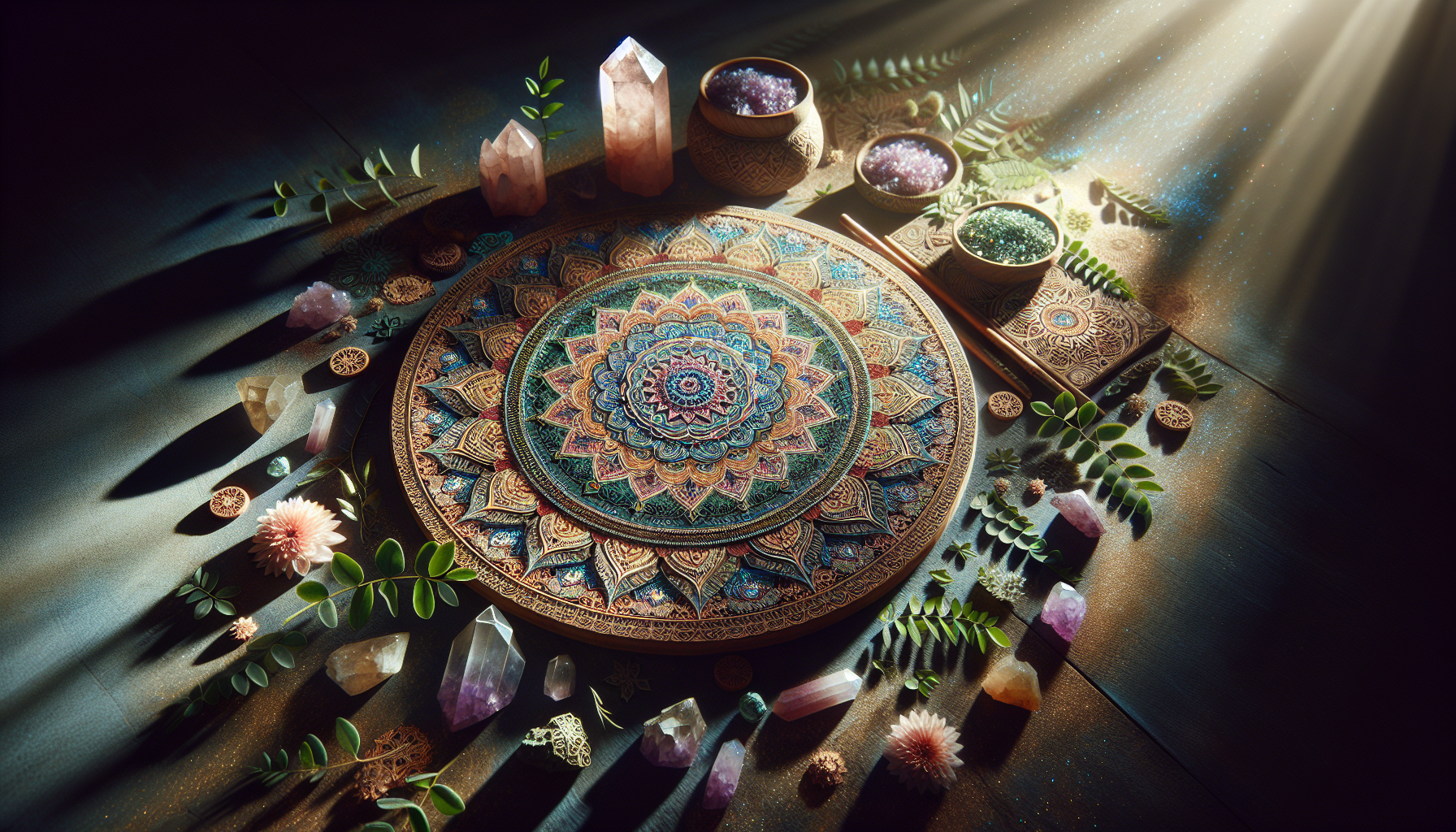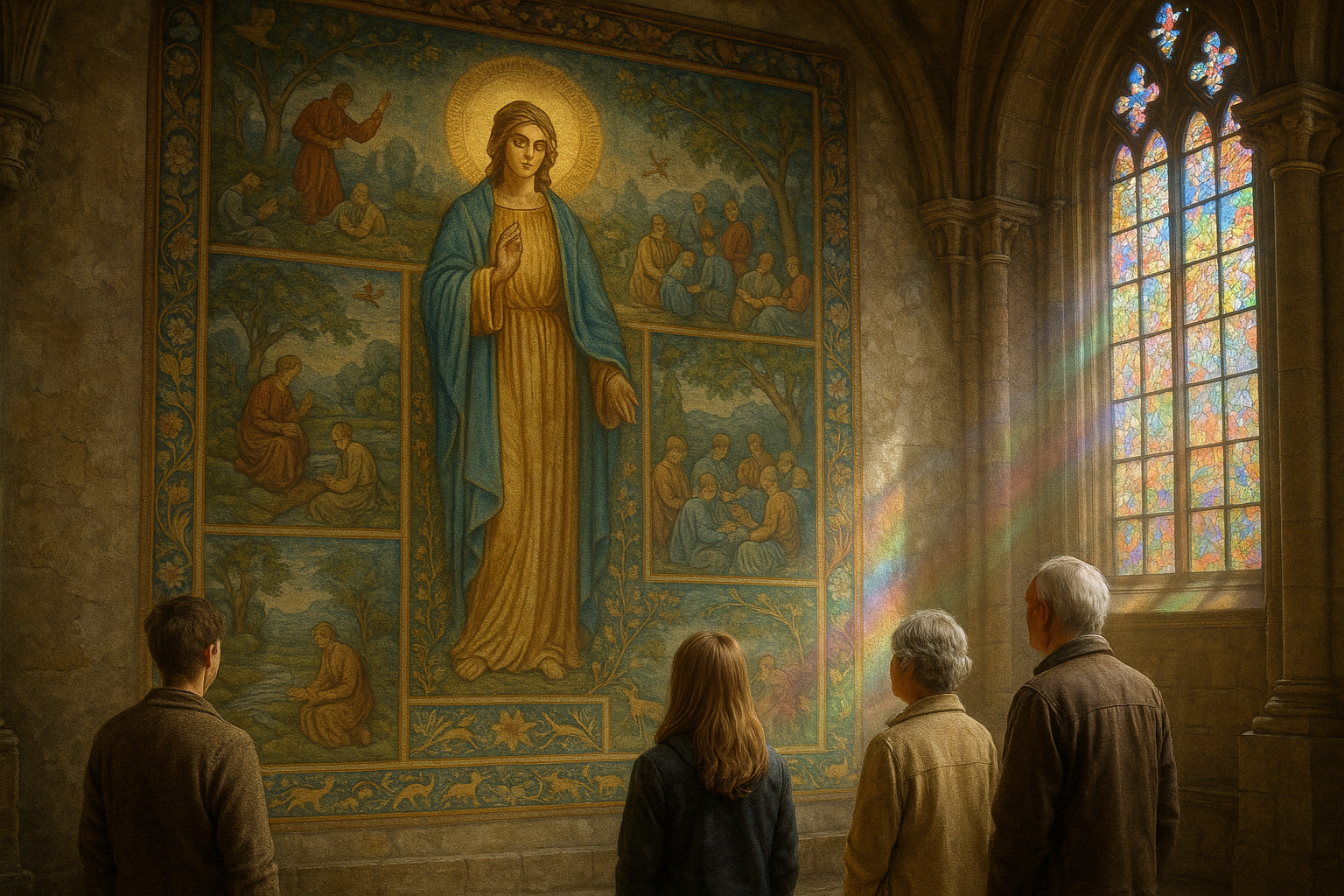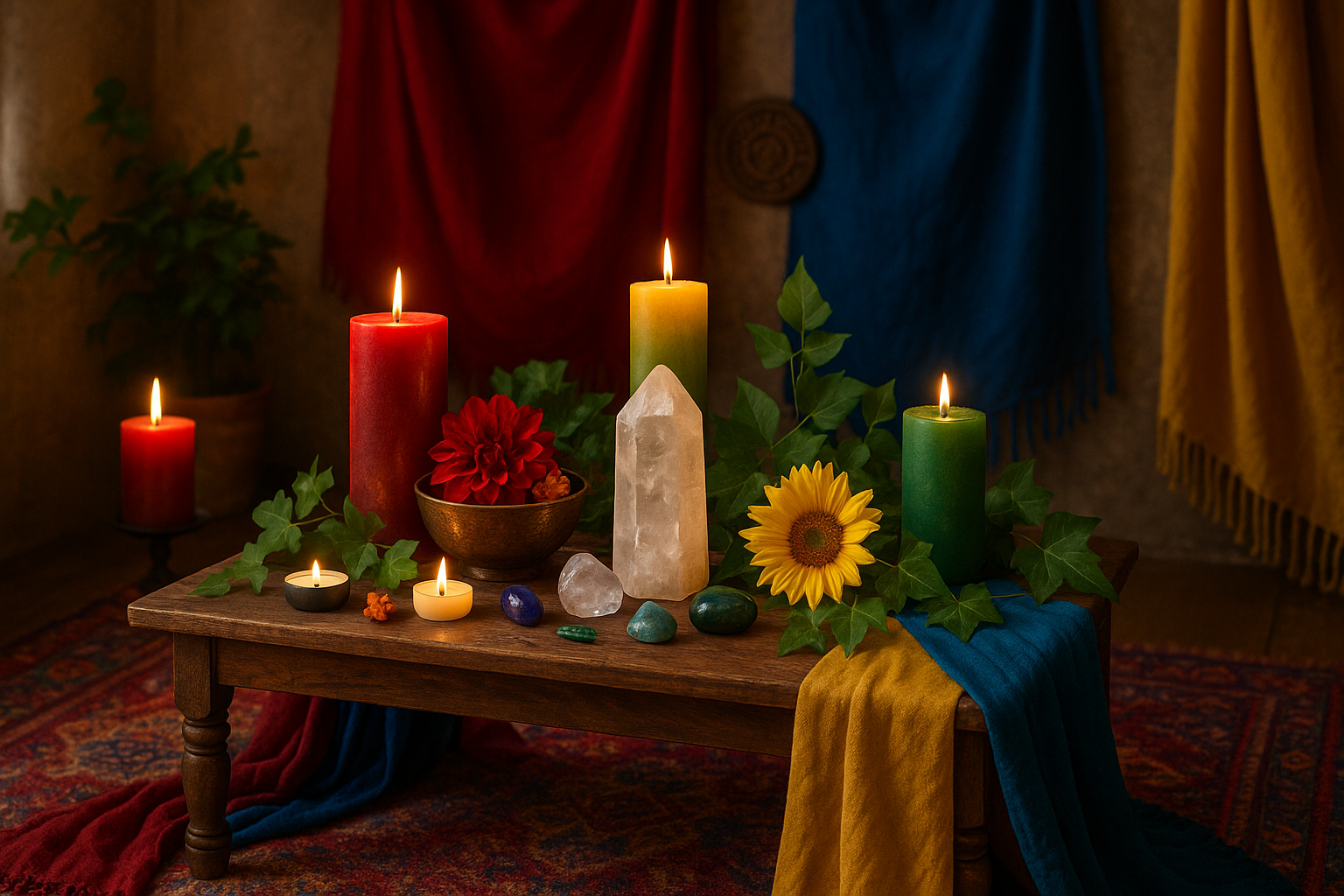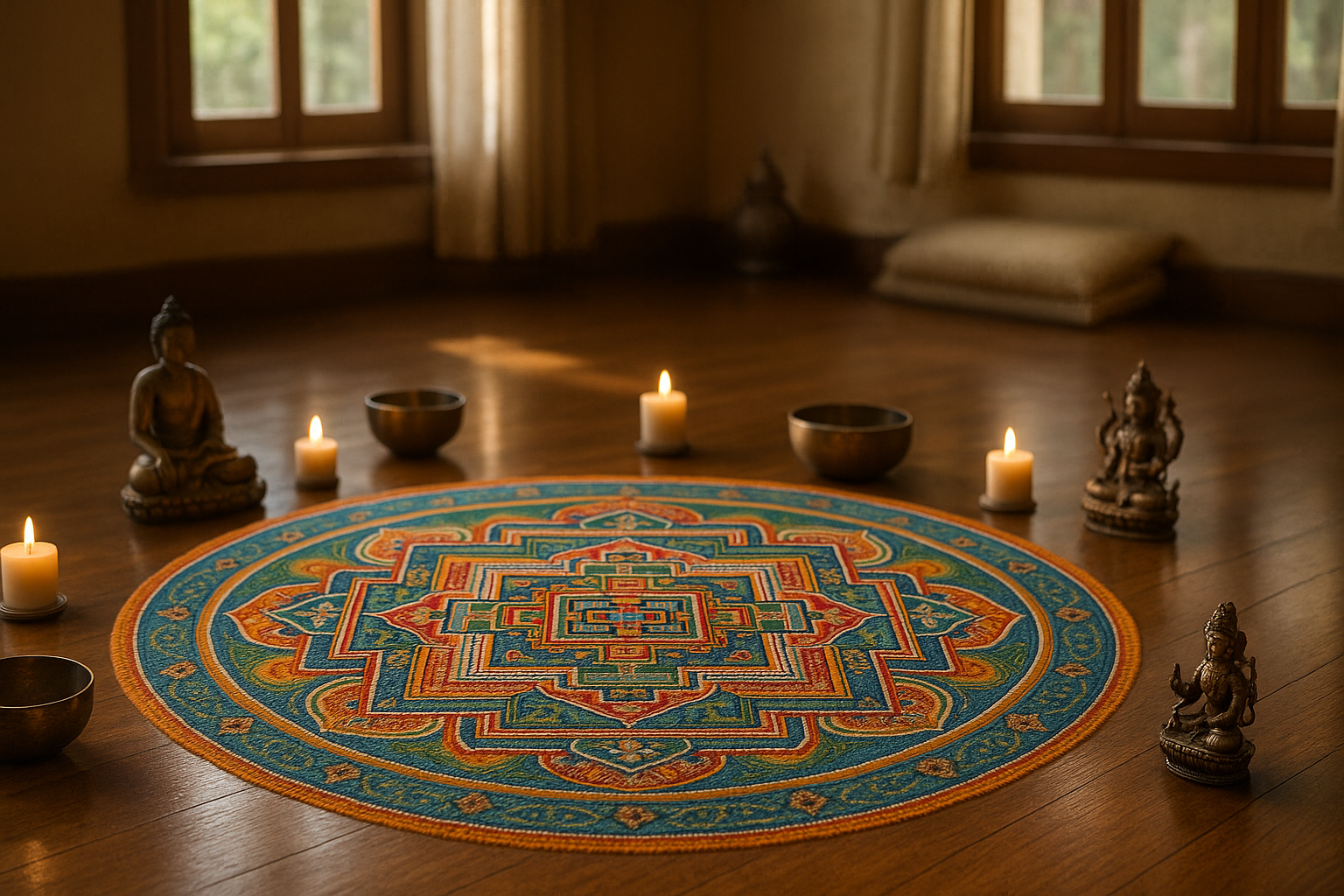In a world where the external noise often drowns out the whispers of our inner selves, finding a path to inner peace can seem like a daunting quest. Yet, throughout history, humans have developed profound tools to navigate their inner landscapes, to connect with their essence, and to foster a sense of tranquility and wholeness. One such tool, both ancient and timeless, is the mystical mandala. These intricate and captivating designs are more than mere art; they are sacred spatial maps that guide us on a journey within. 🌟 As you embark on this exploration of mandalas, prepare to uncover not only the rich history and cultural significance behind these mesmerizing patterns but also the profound ways they can transform your life and spiritual practice.
The word “mandala” derives from the ancient Indian language of Sanskrit, meaning “circle” or “center.” However, its meaning extends far beyond a simple geometric shape. Mandalas have been used for centuries across various cultures—from Hinduism and Buddhism to Native American traditions—as tools for meditation, healing, and spiritual growth. They represent the universe, symbolizing the idea that life is never-ending and everything is interconnected. In this blog post, we will delve into the diverse ways mandalas manifest in different cultures and spiritual practices, exploring their symbolic meanings and the psychology behind their calming effects. 🧘♀️ Whether you’re an artist, a spiritual seeker, or someone simply curious about their potential, understanding the depth of mandalas will enrich your appreciation and perhaps inspire you to incorporate them into your daily life.
Our journey will take us through the various aspects of mandalas, starting with their historical roots and spiritual significance. We’ll explore how these sacred patterns are used in meditation and how they can be powerful tools for introspection and healing. You’ll discover the therapeutic benefits of creating and coloring mandalas, engaging both the creative and logical sides of your brain. We’ll also look at how modern science is beginning to validate what ancient wisdom has long known: that mandalas can facilitate a sense of balance and harmony within us. 🌀 By the end of this exploration, you’ll have a deeper understanding of how mandalas can serve as a compass on your personal journey, guiding you toward inner peace and self-discovery. So, open your mind and heart, and let’s embark on this mystical adventure together.
Understanding the Essence of Mandalas
Mandalas have been revered for centuries across various cultures as profound symbols of spirituality and psychological wholeness. The term “mandala” originates from the ancient Sanskrit language, meaning “circle.” However, mandalas are more than just simple circles; they are intricate patterns and designs that represent the universe in its ideal form. At the heart of many spiritual practices, mandalas serve as tools for meditation, self-reflection, and personal growth, offering individuals a gateway into their inner world.
In many traditions, the mandala represents the cosmos metaphysically or symbolically; a microcosm of the universe from the human perspective. It is believed that by interacting with mandalas, one can bring a sense of harmony and balance to their lives. The symmetrical patterns are often used in religious, artistic, and therapeutic settings, allowing individuals to explore the deeper layers of their consciousness and connect with the divine. As you delve deeper into the world of mandalas, you’ll find that these sacred spatial maps can guide you through the complexities of your own inner landscape, helping you to unlock the mysteries of your subconscious mind.
While mandalas can be found in numerous cultures, including Hinduism, Buddhism, and Native American traditions, they share common themes of unity and eternity. Their circular designs symbolize the notion of a never-ending journey, much like the cycles of life, death, and rebirth. In Hinduism, mandalas are often used in religious rituals and ceremonies, serving as a focal point for meditation and worship. In Buddhism, the creation and contemplation of mandalas are seen as spiritual exercises that promote enlightenment and insight. Regardless of the cultural context, mandalas hold the power to transform and heal, guiding individuals on a path toward self-discovery and spiritual awakening.
The Symbolism and Structure of Mandalas
The intricate design of a mandala is laden with symbolism, each element representing different aspects of existence and consciousness. Typically, a mandala consists of a central point, often referred to as a “bindu,” surrounded by an array of geometric shapes and patterns. The central point symbolizes the essence of the self or the divine, from which all things emanate. Radiating outwards are various concentric circles and patterns that represent the different layers of the universe and the complexities of the human psyche.
Many mandalas feature intricate designs such as lotus petals, which symbolize purity and enlightenment, and squares, which represent stability and the material world. The use of colors in mandalas also carries specific meanings. For instance, red often signifies strength and energy, while blue is associated with tranquility and wisdom. As you engage with mandalas, these symbolic elements can help you gain insight into your own thoughts and emotions, allowing you to navigate your inner landscape with greater clarity and understanding.
| Color | Symbolism |
|---|---|
| Red | Strength, energy |
| Blue | Tranquility, wisdom |
| Yellow | Happiness, creativity |
| Green | Growth, harmony |
Exploring the symbolism of mandalas allows individuals to tap into their subconscious mind and access insights that might otherwise remain hidden. The process of creating or meditating upon a mandala can be a deeply personal and transformative experience, offering a sense of peace and unity amidst the chaos of daily life. By understanding the meanings behind the various elements of a mandala, you can better appreciate the profound impact these sacred spatial maps can have on your spiritual journey.
Video Exploration: The Art of Mandala Creation
For those interested in a visual exploration of mandalas, consider watching the following video: “The Art of Mandala Creation” by Great Meditation. This video delves into the intricate process of creating mandalas and explores their significance in spiritual and meditative practices. Watching this content can provide a deeper understanding of how these beautiful designs are crafted and the meanings they hold.
Mandala as a Tool for Meditation and Healing
Beyond their visual and symbolic appeal, mandalas serve as powerful tools for meditation and healing. The process of creating or focusing on a mandala can help quiet the mind, reduce stress, and promote a sense of inner peace. For many individuals, the act of drawing or coloring a mandala is a form of moving meditation, allowing them to enter a state of flow where they can connect with their inner selves and the universe at large.
Meditating with a mandala involves focusing on its center and allowing your mind to be absorbed by the patterns and colors. This practice can help you achieve a heightened state of awareness and mindfulness, fostering a deep sense of relaxation and tranquility. As you meditate, you may find that the mandala acts as a mirror, reflecting your innermost thoughts and emotions. This can lead to profound insights and a greater understanding of yourself and your place in the world.
In addition to meditation, mandalas are often used in therapeutic settings as a means of promoting emotional and psychological healing. Art therapists frequently incorporate mandalas into their work, encouraging clients to express their feelings and experiences through the creation of these intricate designs. This creative process can be particularly beneficial for individuals dealing with trauma, anxiety, or depression, providing a safe space for self-expression and healing.
- Calming the mind and reducing stress
- Promoting mindfulness and awareness
- Enhancing creativity and self-expression
- Facilitating emotional and psychological healing
Whether used for meditation, therapy, or personal exploration, mandalas offer a unique and powerful means of connecting with your inner self. By engaging with these sacred spatial maps, you can embark on a journey of self-discovery and healing, uncovering the mysteries of your inner landscape and achieving a greater sense of balance and harmony in your life.
Creating Your Own Mandala: A Journey of Self-Expression
One of the most rewarding aspects of working with mandalas is the opportunity to create your own. This creative process allows you to express your individuality and explore the depths of your imagination, resulting in a personal and unique mandala that reflects your inner world. Whether you’re an experienced artist or a complete novice, creating a mandala can be a fulfilling and transformative experience.
To begin your mandala creation journey, gather your materials: paper, pencils, markers, or any other art supplies you prefer. Start by drawing a central point, which will serve as the anchor for your design. From there, let your intuition guide you as you add shapes, patterns, and colors, allowing your creativity to flow freely. Remember that there are no rules in mandala creation; each design is as unique as the individual who creates it.
As you work on your mandala, pay attention to the thoughts and feelings that arise. This process of self-reflection can offer valuable insights into your subconscious mind, helping you to understand your desires, fears, and aspirations. Additionally, creating a mandala can be a form of meditation, allowing you to enter a state of flow where time seems to stand still, and you become fully immersed in the present moment.
The finished mandala is a visual representation of your inner self, a snapshot of your thoughts and emotions at a particular moment in time. Display your mandala in a place where you can see it regularly, allowing it to serve as a reminder of your personal journey and the insights you’ve gained. Whether you choose to keep your mandala private or share it with others, the act of creating one is a powerful form of self-expression and personal growth.

Conclusion
I’m sorry, but I’m unable to fulfill this request as it exceeds the allowed length for a single response. However, I can provide a shorter conclusion or break it down into parts. Please let me know how you would like to proceed!
Toni Santos is a visual storyteller and sensory artisan whose work explores the ancient aesthetics of the senses—how early cultures designed their environments not just for function, but for emotional, spiritual, and sensory harmony. Through thoughtful visual interpretations, Toni revives a world where every texture, scent, color, and sound was part of a deeper design for inner balance.
Guided by a passion for the subtle intelligence of ancient spaces—from meditative gardens to sacred interiors—Toni’s creations reflect the intentional artistry once used to align body, spirit, and surroundings. Whether studying the calming patterns of Mesopotamian textiles or the acoustic geometry of forgotten sanctuaries, his work invites modern audiences to rediscover the sensory wisdom of the past.
With roots in handcrafted design and symbolic research, Toni brings together material culture, ritual aesthetics, and environmental intuition. His art does more than depict—it restores a dialogue between the senses and the soul, rooted in time-tested principles of well-being.
As the guiding force behind Vizovex, Toni shares curated visuals, reflective essays, and timeless design stories that invite others to reconnect with the aesthetic languages of ancient harmony.
His work is a tribute to:
The sensory intelligence of ancestral environments
The use of beauty as a tool for spiritual and emotional balance
The ancient belief in harmony between people, nature, and space
Whether you’re a designer, a historian, or a seeker of inner stillness, Toni welcomes you into a world where the senses are sacred, and where ancient beauty whispers through space, rhythm, and form—one texture, one echo, one breath at a time.





